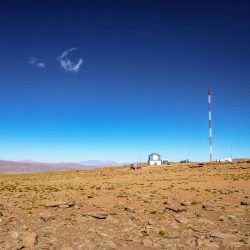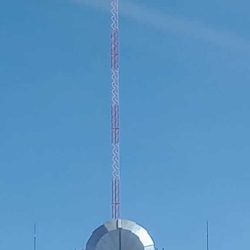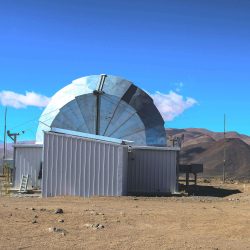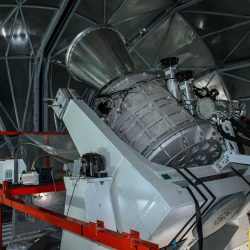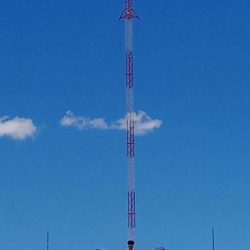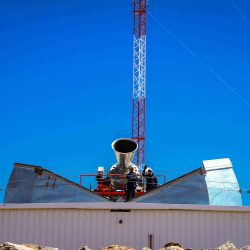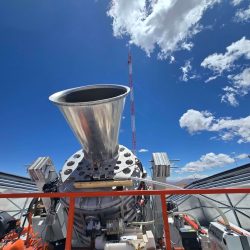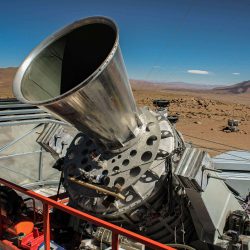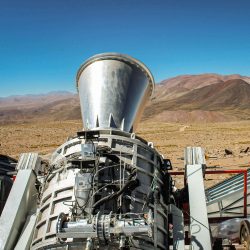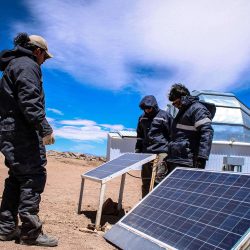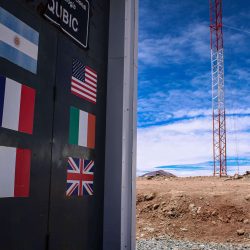
QUBIC Observatory
The QUBIC (Q-U Bolometric Interferometer for Cosmology) project aims to measure the B-modes of polarization of the cosmic background radiation through a new experimental technique that allows greater control of systematic errors, including the removal of galactic contaminants.
QUBIC is an international experimental cosmology project involving institutions from France, Italy, Argentina, the United Kingdom, and the United States of America. The observatory is approximately 4,900 meters above sea level in Alto Chorrillos, near San Antonio de los Cobres, Salta Province, Argentina.
Official website: qubic.org.ar
What does QUBIC study?
Cosmic background radiation is the relic electromagnetic radiation corresponding to an early and hot universe phase. This radiation, which fills the entire universe, was emitted approximately 380,000 years after the Big Bang in an event known as decoupling.
The cosmic background radiation is polarized. In particular, the primordial B modes of this polarization are closely related to the gravitational waves that would have been generated during the inflation, a stage that is believed to have begun approximately 10-36 second after the Big Bang in which the universe would have undergone an exponential expansion. Therefore, detecting the primordial B modes of polarization of the cosmic background radiation, which have not yet been observed, will allow the study of the very early stages of the universe.
Technological Developments of the Project
The weakness of the B-mode signal requires even more complex and sensitive experiments than those designed to detect it so far. To address this challenge, the QUBIC collaboration has developed the innovative technological concept of bolometric interferometry. Bolometer comes from the Greek word for “light beam measurement.” These microsensors operate at very low temperatures. When they detect cosmic background radiation, they heat up, changing the electrical resistance of the material, allowing its detection in the form of an electric signal. Interferometry is used to obtain information about the wavelength of radiation. This new experimental technique allows for greater control of systematic errors, including the removal of galactic contaminants. The QUBIC project telescope consists of a cylindrical container, called a cryostat, measuring 1.8 m high by 1.6 m in diameter. It serves, among other things, to maintain the different detector systems at very low temperatures (close to -273°C), allowing them to capture the small temperature fluctuations produced by the cosmic background radiation. The cryostat and its mount are housed in a dome that opens for sky observation.
The ITeDA team working on QUBIC is responsible for the development and maintenance of the Observatory’s infrastructure, which includes site adaptation and power provision, the design and construction of the instrument housing building, the design and manufacture of a three-axis observation mount, the design and construction of a laboratory for instrument assembly and integration, the installation of the calibration tower, and the design and construction of the cable rotation system and the equipment necessary for the instrument’s rotation.
On the other hand, ITeDA is developing new sensors called Micro Magnetic Calorimeters (MMC) in collaboration with researchers from the Karlsruhe Institute of Technology in Germany for future instruments.

